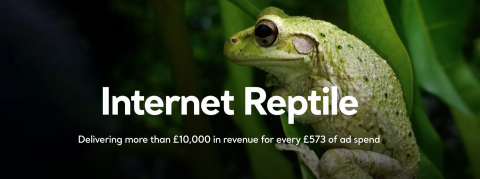Case studies are an essential part of any business’ marketing collateral. But creating a really good one takes more than just putting pen to paper and hoping for the best. Learn why they are important, and how to write a case study for your website that not only packs a punch, but drives results.
What is a case study?
A case study is a way of demonstrating how your business’s helped a person or client overcome a particular challenge. It clearly lays out how your products or services were used to solve a problem, and the results.
It’s important to note that a case study isn’t a press release or a sales pitch (at least, not directly), it’s about showcasing your work and framing it in the context of helping others. In short, it’s not about you, but your customer.
Why are case studies important?
Case studies can often get overlooked when it comes to producing marketing material. After all, they’re not exactly the most glamorous form of content to produce, and blog posts can seem more appealing. So why invest in case studies at all? Haven’t we moved on to other things?
The truth is that case studies are, and continue to be, incredibly effective. They help to attract new customers, cement trust and increase conversions.
It’s the storytelling nature of the format that boosts its effectiveness, and that’s what case studies allow you to do – tell a story about your brand and how you’ve helped others. The story you draft paints a picture, stimulates emotions, and gives your business greater selling power. Storytelling, by using your customer’s voice in a data-backed piece, is an invaluable sales tool – and that’s why case studies continue to work so well.
What makes a good case study?
There are a number of things a good case study should include. Here are the core things you should consider when you are preparing to write a case study for your website, and you can use these as a sort of checklist when creating your draft.
A compelling subject matter
Not every piece of work is worthy of a case study. Choose your best projects and accomplishments, where the client has been happy with what’s been achieved and you have clear results to show for it.
It doesn’t matter the size or scope of the work, either. It could have been a one-off, short campaign or a full website redesign over the course of several months. What matters is the impact you had.
And then it needs a good angle. Is there anything particularly different or unique about the problem you’ve solved? Anything different that you did as a business? Don’t use details that don’t support the purpose, but think about just why it was so successful.
Industry-specific
Case studies work mainly because they tend to be very focused and industry or sector-specific. Simply put, you should never see a case study that’s too general and not targeted to the industry you’re in.
Being specific means you’ll strike a code with your target market. You want it to be relatable, and for them to be able to recognise themselves in your story.
If you work with a number of different industries, it’s a good idea to create a case study for each, so you ensure you can reach each of your audiences.

Demonstrable problem-solving
Case studies are solution-centric, so you need to show yours at work. An effective one will clearly demonstrate how you took a problem and solved it using your expertise, products or services. There needs to be a before and after – a story.
Solid evidence
Few things can excite a buyer more than factual claims, stats and clear data – and if you don’t have the results, you simply don’t have a case study.
Evidence is particularly key nowadays, since social proof is part of the technology renaissance we’re witnessing. Customers have become more savvy and demanding of proof.
Great case studies context, relevance and credibility. See this article on CXL about writing emotion-packed case studies.
Years ago, customers relied heavily on hard copy brochures, catalogues and leaflets when making a buying decision. Taking a statement at face value is no longer the done thing. In the past, if you saw an advertisement for a fish and chips shop, claiming they were the best in the city, you may just have believed it – but now it takes a little more than just words.
Thanks to social media, your potential customers have the freedom and ease to access information. As a result, they’re less trusting of marketing material. They’d rather access authentic third-party industry reviews and data. They want to know what other people say about your brand or organisation.
Choose your data carefully – ideally it should be reflective of the problem your client was facing. The more thought-provoking your data, the better.

Quotes and testimonials
There’s nothing quite like hearing it from the horse’s mouth. Including a quote or testimonial from your customer is not just a trust signal, but an opportunity for them to tell the story in their own words, which is far more convincing to other prospective customers than anything else.

Presented well
Last but by no means least, your case study needs to presented in an engaging, easily digestible way.
This includes good formatting and a clear structure (which we’ll get to in a moment) but also the visual elements to it. You may want to enlist the help of a designer to really present it in the most user-friendly way. Depending on time and budget, you could even create a short video to help illustrate the story.
Of course, all the usual things for writing for the web still apply: headings and subheading, bullet points and lists should all be included. Make it as easy as possible for the scanners and skimmers out there to read and engage with it.
How to write your case study
As we said previously, it’s not simply a case of putting pen to paper. The key to writing a successful case study is nailing its structure. It has to read well, and it has to tell that all-important story that captures your audience.
Thankfully, there’s a tried-and-tested method of doing this which we adhere to. To help your writing flow nicely, we recommend structuring it into the following sections:
1. The headline
This one-liner should be an impactful overview of the project, perhaps highlighting one of the key goals or achievements.

2. The client
Open with a short introduction to the client – who they are, their background and industry. You can base it on what they say on their company website or LinkedIn profile.
3. The challenge
Explain over a paragraph or two the challenges your client was facing and wanting to overcome. There could be just one, or a few different pain points.
4. The solution (and your approach to it)
Now for what you actually did. Talk about how your products or services helped solve that problem. Get into the specifics, and also explain your thinking and decision-making throughout the process.
5. The results
This is where you lay out It’s always better to use real numbers, not just vague statements like ‘more than doubled their traffic’. Really hammer it home by pulling out the big guns!
6. The testimonial
Finish up with a quote from your customer, ideally stating how their business has been improved or how happy they are with the service received. It doesn’t need to be lengthy, but it should be genuine. And be sure to use their own words, rather than trying to make it sound typically corporate.
Case studies: your next steps
So there you have it – our complete guide on how to write a case study for your website that captures your audience and hopefully converts them. Of course, no two case studies are ever the same (and nor should they be), but if you stick to a structure you can
Above all, the three fundamental elements are:
- What was the problem?
- What solution did you provide?
- What proven results can you showcase?
As long as you answer those questions fully and in detail and you can’t go too wrong.
Effective case studies require time and effort to produce, but the impact they can have and the benefits they can bring to your business make them an incredibly worthy investment.
Have you just learned something new?
Then join the 80,000 people who read our expert articles every month.


